
Alphaville: une étrange aventure de Lemmy Caution is a 1965 French New Wave tech noir film written and directed by Jean-Luc Godard. It stars Eddie Constantine, Anna Karina, Howard Vernon and Akim Tamiroff. The film won the Golden Bear award of the 15th Berlin International Film Festival in 1965.

Eddie Constantine was an American singer, actor and entertainer who spent most of his career in France. He became well-known to film audiences for his portrayal of secret agent Lemmy Caution and other, similar pulp heroes in French B-movies of the 1950s and 1960s.
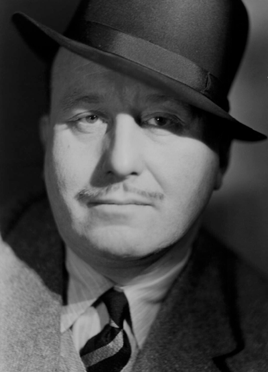
Reginald Evelyn Peter Southouse-Cheyney was a British crime fiction writer who flourished between 1936 and 1951. Cheyney is perhaps best known for his short stories and novels about agent/detective Lemmy Caution, which, starting in 1953, were adapted into a series of French movies, all starring Eddie Constantine. Another popular creation was the private detective Slim Callaghan who also appeared in a series of novels and subsequent film adaptations.
Lemmy Caution is a fictional character created by British writer Peter Cheyney (1896–1951). Caution was first portrayed as a Federal Bureau of Investigation (FBI) agent, and in later stories as a private detective.
Bernard Borderie was a French film director and screenwriter. His father, Raymond Borderie, was one of the producers of Les Enfants du Paradis.
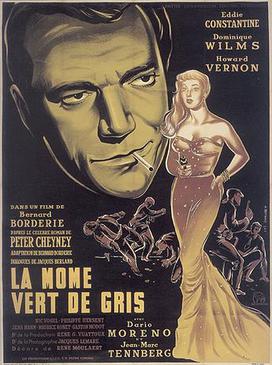
La môme vert-de-gris, released in the USA as Poison Ivy, is a 1953 French crime film.
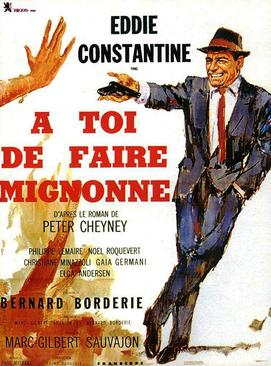
À toi de faire... mignonne, released in the US as Your Turn, Darling, is a French-Italian thriller film based on the 1941 novel Your Deal, My Lovely by Peter Cheyney. It came out ten years after La môme vert-de-gris which had been the first of film of this series.

This Man Is Dangerous is a 1936 thriller novel by the British writer Peter Cheyney. It is the first in his series of ten novels featuring the FBI agent Lemmy Caution. A bestseller, it enabled Cheyney to leave his job as a policeman and become a full-time novelist.
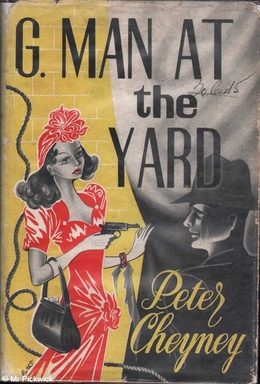
G-Man at the Yard is a 1946 thriller novel by the British writer Peter Cheyney. It is the final entry in the popular series of novels featuring the FBI agent Lemmy Caution. It was republished posthumously in 1953 following his death in 1951, now also including three short stories. Unlike many other novels by Cheyney it was never made into a film.
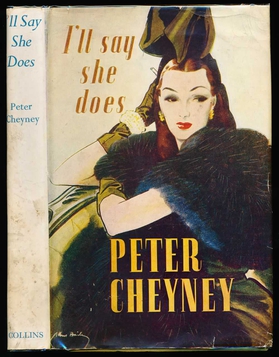
I'll Say She Does is a 1945 thriller novel by the British writer Peter Cheyney. It is the tenth in his series of novels featuring the FBI agent Lemmy Caution. Later editions of the book are generally titled I'll Say She Does!
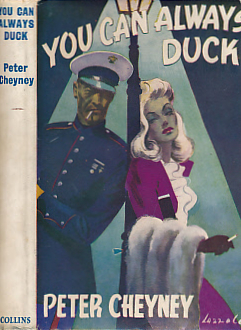
You Can Always Duck is a 1943 thriller novel by the British writer Peter Cheyney. It is the ninth in his series of novels featuring the FBI agent Lemmy Caution. The action takes place in wartime London where Caution is on the trail of a gang of black marketeers who have got mixed up in espionage. It was one of a number of films and novels of the period that made use of the booming black market for their setting.

Never a Dull Moment is a 1942 thriller novel by the British writer Peter Cheyney. It is the eight in his series of novels featuring the FBI agent Lemmy Caution. Cheyney had become known for his hardboiled style, similar to that of Raymond Chandler.

Your Deal, My Lovely is a 1941 thriller novel by the British writer Peter Cheyney. It is the seventh in his series of novels featuring the FBI agent Lemmy Caution. Much of the action takes place in wartime London. Caution is called in to investigate the disappearance of a prominent scientist.
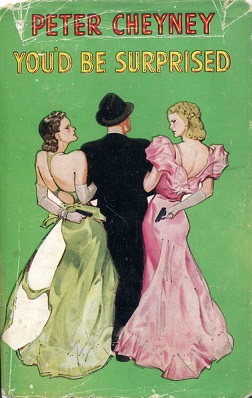
You'd Be Surprised is a 1940 thriller novel by the British writer Peter Cheyney. It is the sixth in his series of novels featuring the FBI agent Lemmy Caution. Unlike several of the others it has not been adapted for film.
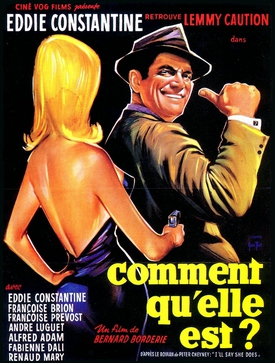
Women Are Like That is a 1960 French spy thriller film directed by Bernard Borderie and starring Eddie Constantine, Françoise Brion and Alfred Adam. It is based on the 1945 novel I'll Say She Does by the British writer Peter Cheyney featuring hardboiled FBI agent Lemmy Caution. It was part of a series of films featuring Constantine as Caution, inspired by the books by Cheyney who had a large French following.
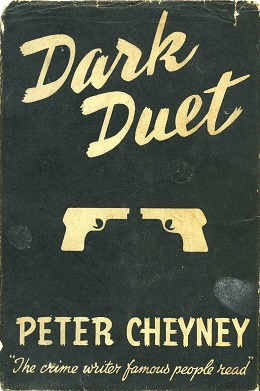
Dark Duet is a 1942 spy thriller novel by the British writer Peter Cheyney. Cheyney had become known for his hardboiled crime thrillers featuring Lemmy Caution and Slim Callaghan, but this novel was his first fully-fledged espionage novel. The novel is set in wartime London, Lisbon and Ireland. It was published in the United States with the alternative title The Counterspy Murders.

Dance Without Music is a 1947 thriller novel by the British writer Peter Cheyney. While Cheyney had gained his reputation with series about two celebrated characters Lemmy Caution and Slim Callaghan, he also wrote several popular stand-alone novels about hardboiled private detectives such as this. It was serialised in Britain by The News of the World. In the United States it was published by Dodd Mead in 1948.

One of Those Things is a 1949 thriller novel by the British writer Peter Cheyney. Although best known for his series featuring Lemmy Caution and Slim Callaghan, this was one of several stand-alone novels he wrote featuring hardboiled private detectives. It was also published under the alternative title Mistress Murder.
Slim Callaghan is a fictional London-based private detective created by the writer Peter Cheyney. Like another of Cheyney's characters, the FBI agent Lemmy Caution, he was constructed as a British response to the more hardboiled detectives of American fiction such as Sam Spade and Philip Marlowe.

Sinister Errand is a 1945 spy thriller novel by the British writer Peter Cheyney. Cheyney known for his creations Lemmy Caution and Slim Callaghan, introduced a new character the half-American secret agent Michael Kells. It was followed by a sequel Ladies Won't Wait in 1951.

















